We wear seatbelts in cars and life jackets in boats, so why aren’t all backcountry skiers strapping on Avalanche Airbags?
Airbag’s are a contentious topic among backcountry enthusiasts. Frankly, the only thing the majority of experts can agree upon is that TERRAIN choice is always the root cause of deadly avalanche incidents.
When it comes to airbags the statistics are complicated and convoluted, but the science and results are clear enough. Backcountry skiers who successfully deploy an airbag in a slide have a higher chance of staying above the snow and survival. Now, this doesn’t mean that ALL skiers and boarders who wear airbags have a reduced chance of death in an avalanche. Actually, some skiers and boarders who fall prey to “Risk Homeostasis” actually may have a higher chance of avalanche fatality. (I’ll explain this later)
In this post I will explain the reasons why you should think about equipping yourself with an avalanche airbag before your next Backcountry adventure.
Table of Contents
What Is An Avalanche Airbag?
The leading cause of avalanche fatality is asphyxiation. The purpose of an avalanche airbag is to keep a victim as close to the surface as possible reducing the amount of time or depth someone is buried.
Airbag systems are big 150L tear-proof balloons that explode out of the head, neck and chest area of a backpack or vest. It is activated by a pull handle which is located on the strap and includes a hip and crotch strap preventing the bag from being pulled off your head. They don’t auto deploy like many aquatic life jacket and the wearer needs to pull the t-handle to activate the airbag if caught in a slide.
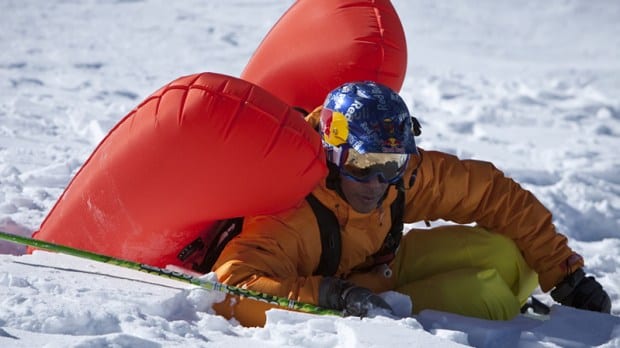
How Does an Avalanche Airbag Work?
The science is simple and relies on a process known as ‘The Brazil Nut Effect’. If you were to shake a bag of mixed nuts the jostling would force the big bulky brazil nuts to the top, the same goes for snow (give it a try). Essentially, in equally moving mass particles, the smaller particles gravitate to the bottom and the larger to the surface. The motion and result of an avalanche is no different than that delicious bag of nuts. The largest snow particles and hopefully the airbag will rise to the surface as the slide falls. The obnoxious bright color and size of the airbag can also be useful to locate the victim. Modern airbag technology also automatically deflates after burial so an air pocket can be created for the victim,
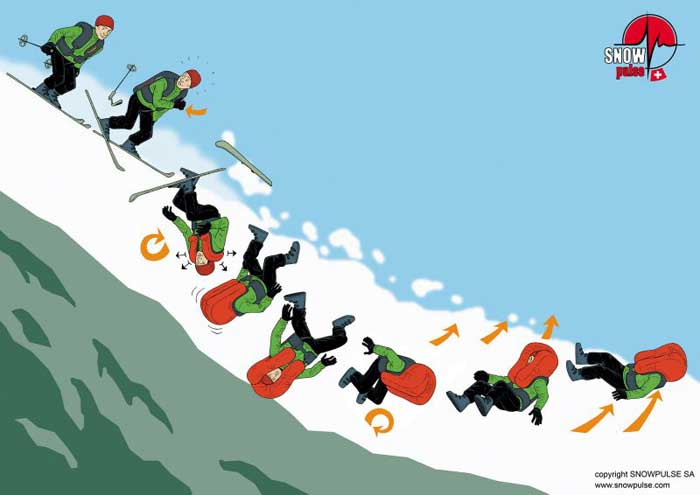
Avalanche Airbag Effectiveness (The Statistics)
Studying the effectiveness of avalanche airbags is very complicated. There are so many variables to be accounted for and no single recorded avalanche situation is the same. Thank god for the independent researchers (who are much brighter than me) who have studied this topic.
A 2007 study by Hermann Brugger recorded avalanche data from Switzerland and Austria between 1990-2004. Researchers found that those equipped with avalanche airbags had a lesser chance of dying (3% fatality rate) and those without a (19% fatality rate).
Airbag marketing companies latched on to the 97% survival rate of those wearing an airbag. But, these numbers can be spun in all sorts of different ways so we need to keep in mind that 81% of people caught in an avalanche without an airbag will survive. In my eyes, regardless of the nitty gritty details, reducing mortality by 15% seems pretty damn good.
The Utah Avalanche Centre created a fantastic visual on these results below.
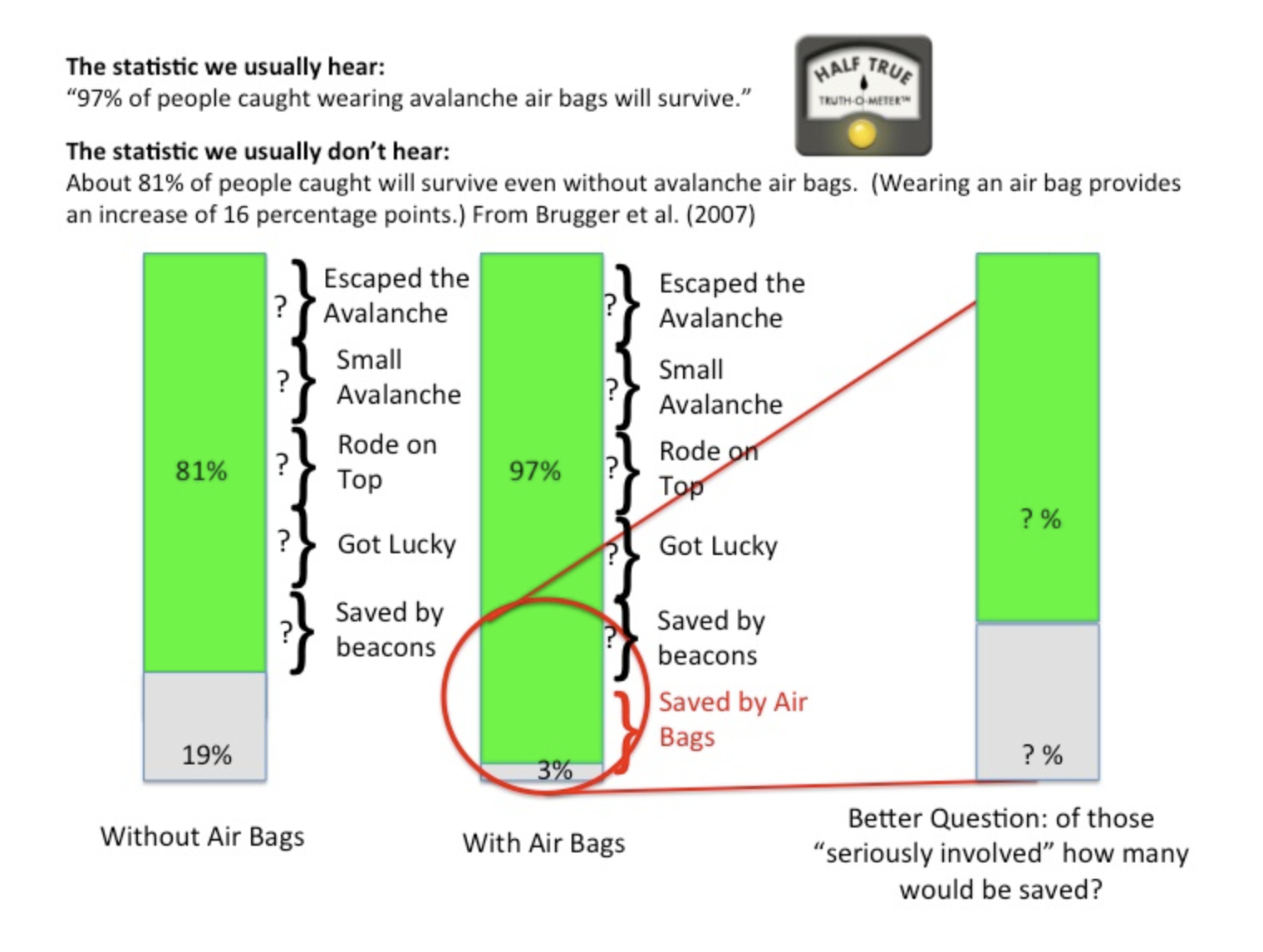
In 2014, Pascal Haegeli revisited the study on Avalanche Airbag effectiveness. The researchers used multivariate analysis to calculate the adjusted absolute risk and reduction and effectiveness of airbags on burials and mortality. They took into account the 20% chance of non- deployment which 60% of the time was attributed to deployment failure by the user. They found that the absolute reduction of mortality for inflated airbags is 11%. This is a slightly smaller impact on survival than previously reported in Bruggers 2007 study. Once again, I see no reason why every skier and snowboarder shouldn’t use every safety advantage at their disposal.
The studies are clear and researchers and professionals agree upon the airbag’s ability to reduce the chances of avalanche mortality in low consequence terrain. However, when it comes to high consequence terrain, you don’t stand much of a chance with or without an airbag. So remember, TERRAIN choice is everything!
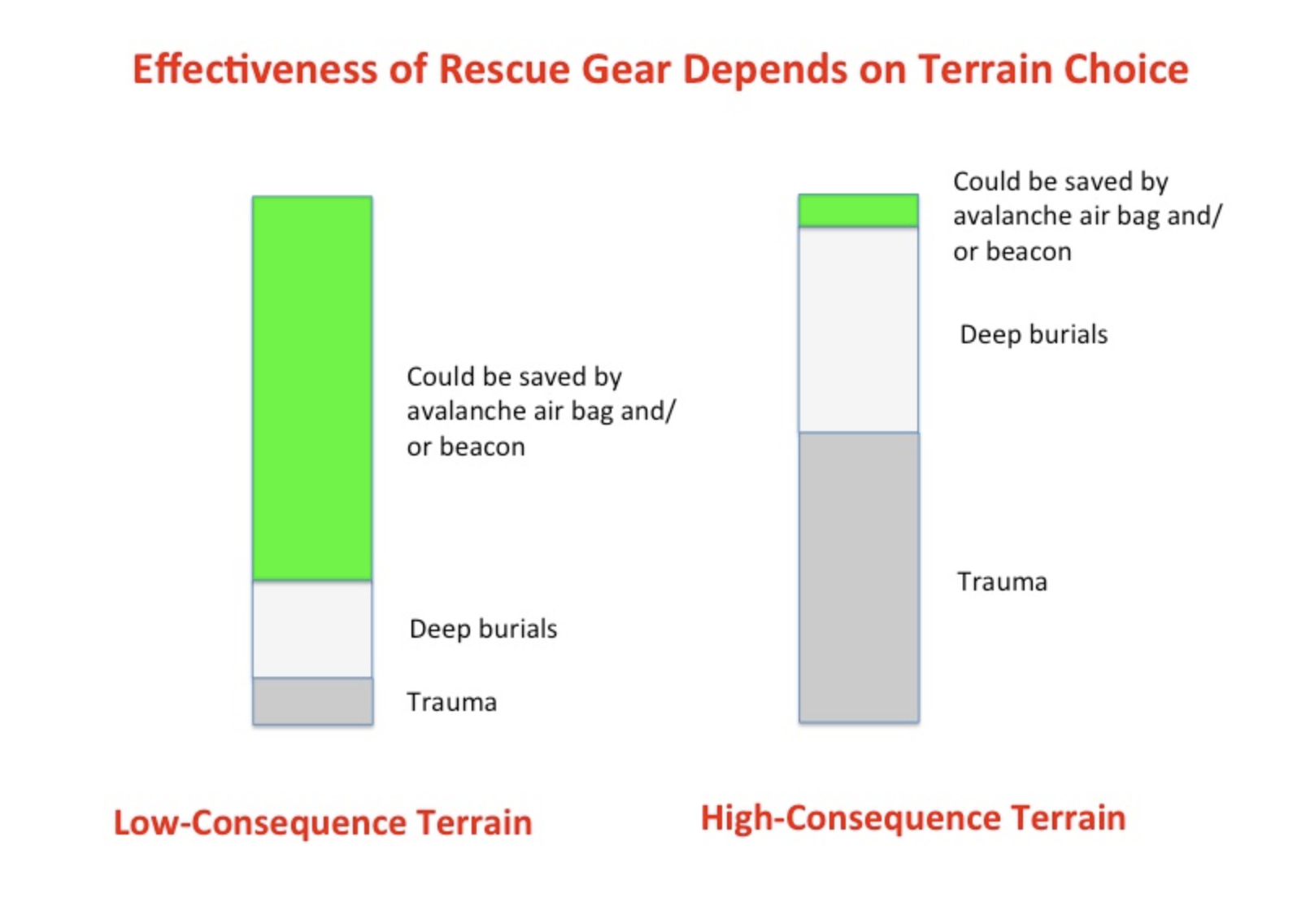
Risk Homeostasis (Why Avalanche Packs Make You Less Safe)
Risk Homeostasis is a big word with a very simple meaning. Risk homeostasis is a hypothesis posited by Wilde, Gerald. (1998). If the perceived level of risk in one part of a person’s life changes, they will compensate by either reducing or increasing the amount and severity of risks they take… all in order to maintain an equilibrium of perceived risk.”
So to put it in simple terms. Many people who wear an avalanche airbag may perceive less risk, but subconsciously, compensate by making riskier decisions than before. Trauma is the second biggest killer in avalanches and an airbag will not protect you from trauma. I would love if there were a way to better research risk homeostasis in regards to terrain choices, but, most skiers and riders don’t even believe or admit that their risk appetite has changed at all. Increasing your risk appetite and terrain choices when travelling in the backcountry will exponentiate the chances you lose your next Russian roulette game and don’t come home alive. I can’t stress enough how crucial it is for those who begin to wear airbag’s to make a conscious effort to make the same judgements as before.
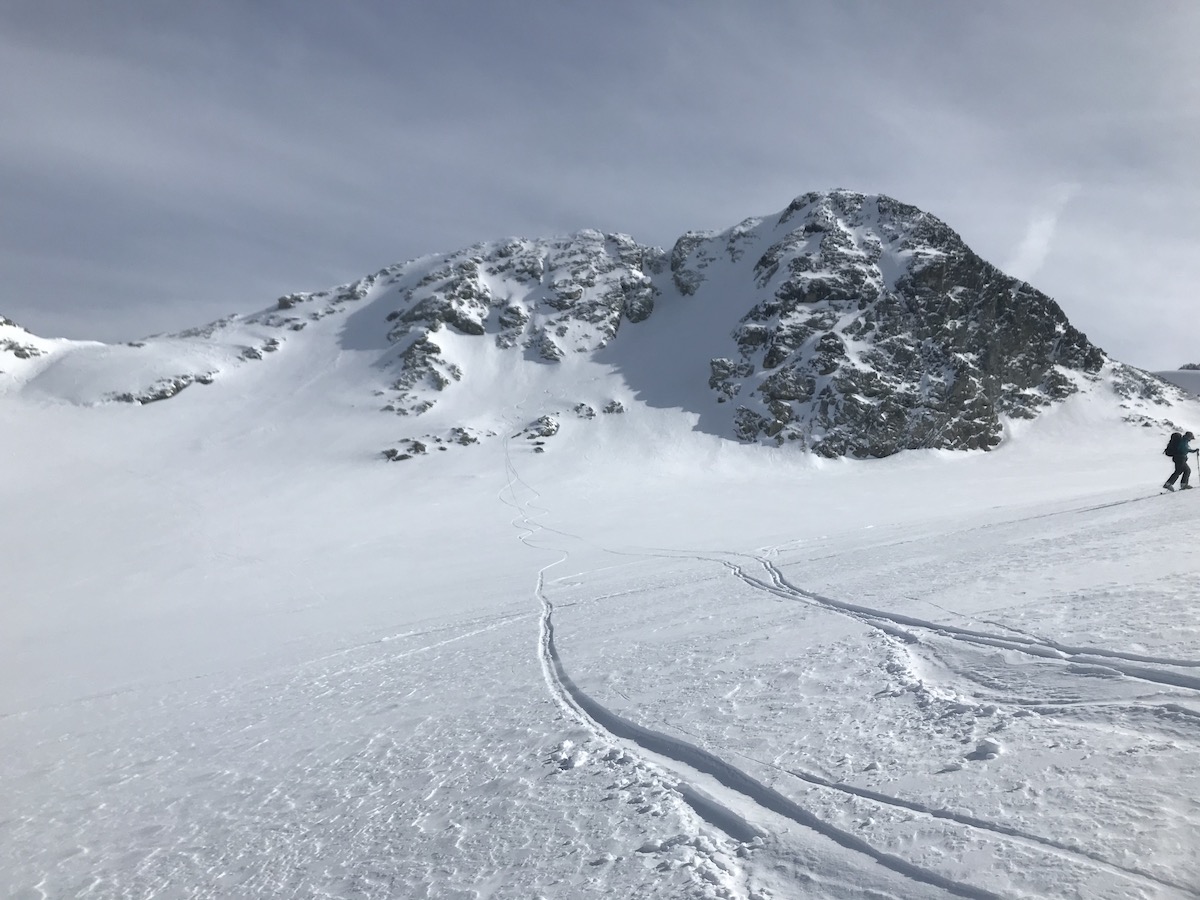
Do I Need An Airbag to Be Safe In The Backcountry?
No. The only non-negotiable pieces of safety equipment are a beacon, probe and shovel. These items can save your life and are also the tools needed to save the lives of others in your group. Proper avalanche training and decision making skills are the most important tools of all. If you haven’t taken an Avalanche Safety Training Course I would absolutely recommend it. I even wrote a post on why you SHOULD take your AST1.
However in my opinion, if you can afford to backcountry ski you should be able to shell out some more cash for an airbag (you can’t put a price on life).
Why People Choose Not To Wear Airbags
Cost
Airbags are not cheap, and for the casual backcountry skier or rider the price tag may seem excessive, especially for those who make very safe terrain choices. But let’s be real… I don’t think the cost excuse is warranted. Backcountry skiing gear is expensive and a lot of the people you meet skiing in the Backcountry have no problem buying an Arcteryx snowsuit and top of the line bindings and skis. I write blog posts and make videos for a living. I barely can afford to eat and I 100% stand by the investment.
They Believe it Will Not Make Them Safer
Some backcountry skiers just simply feel like they don’t need it. They believe that their decision making is very sound and aren’t interested in carrying around another gadget. Regardless of how great your terrain choices are, mountains are mountains and we are human, so why not have an extra safety gadget in case an accident happens.
Weight & Size
Backcountry enthusiasts are always very weight focused. The instruments inside the bag and the balloon itself adds around 4lbs on average to your backpack. The Black Diamond Jet Force Pro weighs 6lb 7oz whereas the Dawn Patrol Backpack (No airbag) weighs 2lb 5oz. If you are a competing ski mountaineer I totally understand the need to keep it light, but for us average joes, why not build up some sweet endurance and tree trunk legs!
The Best Avalanche Airbag Pack’s
The avalanche airbag technology has gone a long way. You used to have to purchase a new cartridge every time you deployed a bag and would not be able to re-arm it until you arrived home. These new packs below have solved this issue and are rechargeable with batteries and can be used many times in the field and for practice.
BCA Float E2-35 Airbag Pack (Best Overall Avalanche Airbag)
Category: Electric fan (battery) – Alpride E2 Supercapacitor
Weight: 6 lbs 1oz
Capacities: 25, 35, 45L
The BCA E2 is my daily driver in the backcountry. I trust Backcountry Access with all of my snow safety gear. The pack is robust and never disappoints. It’s super easy to test and make sure the airbag is folded properly. My favourite part about the pack are the durable materials and the stash pocket at the bottom for easy access to water, snacks, or a camera while hiking. I find it comfortable to wear and it feels lighter than it looks. The only downside is sometimes the sipper pouching holding the airbag can slightly open if you’re skiing really hard and you have to re-zip the airbag in the field. Overall, BCA is my recommendation for all of your ski backpack needs.
Black Diamond Jetforce Pro 35L Avalanche Airbag Pack (Runner Up)
Category: Electric fan (battery)
Weight: 6 lbs. 7 oz.
Capacities: 10, 25, 35L
The BD Jetforce Pro features a fan based electronic system which is travel friendly so you can fly with the pack and it can be deployed as many times as you like so you can practice with the pack. It allows 4 deployments after a single charge and will automatically deflate to create an air pocket after burial. You can charge it using a wall socket and micro USB or you can insert 2 AA batteries to charge in the field. It connects to a Bluetooth app to test the system and make sure everything is working properly. The Jetforce Pro pack is modular so you can switch from 10,25 and 35L options for whatever type of trip you’re going on. It’s got a dedicated area for avi tools and a radio attachment if needed.
Black Diamond Jetforce UL 26L (Best Ultralight Avalanche Airbag Pack )
Category: Canister (compressed gas)
Weight: 4 lbs. 6 oz.
Capacity: 26L
If you are worried about weight you can opt for the Jet Force UL. It has all the same features as the Jetforce Pro but with a much lighter design thanks to using canisters instead of an electric deployment system.
Osprey Soleden Pro 32 Avalanache Airbag Pack (A Pack That Will Last a Lifetime)
Category: Electric fan (supercapacitor)
Weight: 6 lbs. 8 oz.
Capacity: 32L
The Soleden Pro uses the Alpride E1 electronic airbag deployment system. So just like the Black Diamond it can be deployed for practice, and safely taken on flights with you. However, it only has one deployment per charge and needs to be charged with a micro USB or with AA batteries. The supercapacitor battery will last a lifetime and performs perfectly in ultra-cold temperatures. The Soleden Pro is the perfect option for someone who want’s a reliable pack that will stand the test of time.
BCA Float 2.0 (Best Budget Avalanche Airbag Pack Option)
Category: Canister (compressed air)
Weight: 6 lbs. 2.1 oz.
Capacities: 12, 22, 32, 42L
The BCA Float 2.0 is a well tested and classic airbag system that uses compressed air to deploy the airbag. It’s affordable and canister refills can be found across the world. The BCA pack is a one size fits most and you don’t get the customizability of the BD or Osprey Packs. The system is not interchangeable like the packs above. But, it’s a great budget option and remember if you make consistently safe choices you will hopefully never have to deploy the airbag.
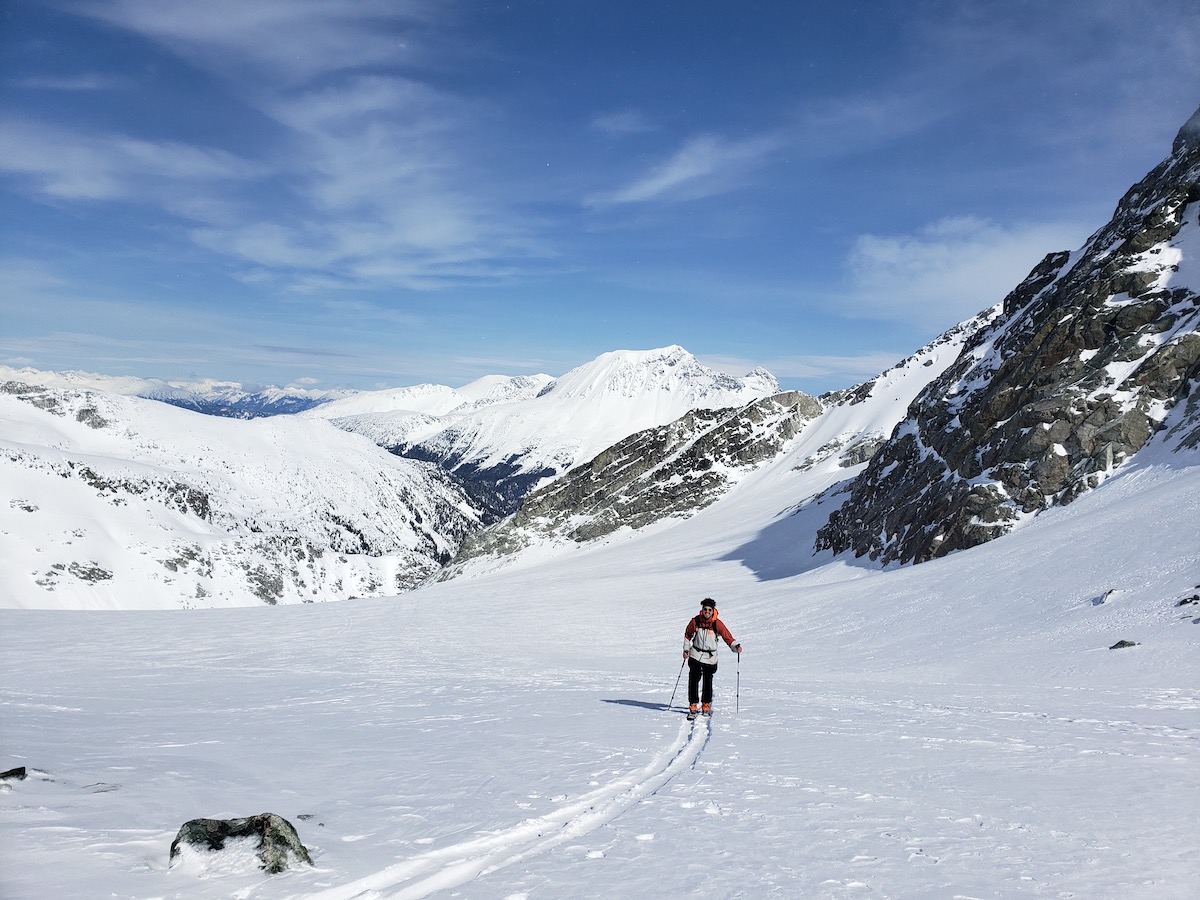
The results are very clear and Avalanche airbags are the next best safety tool next to beacons. With all the improvements in technology it is becoming increasingly naïve to say no to an avalanche airbag. Hopefully you will never have to use it in your lifetime, but if you do, it will surely be the best money you ever spent!
Most importantly, regardless of the gear you run, always make appropriate terrain choices!
Have fun and be safe out there!
Do you ride with an avalanche airbag?
Let me know in the comments!

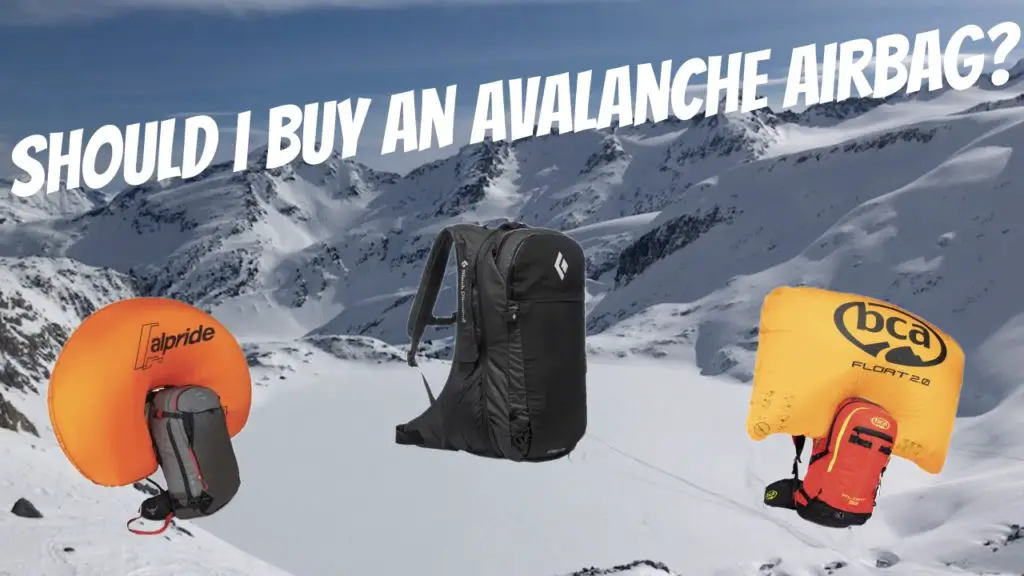
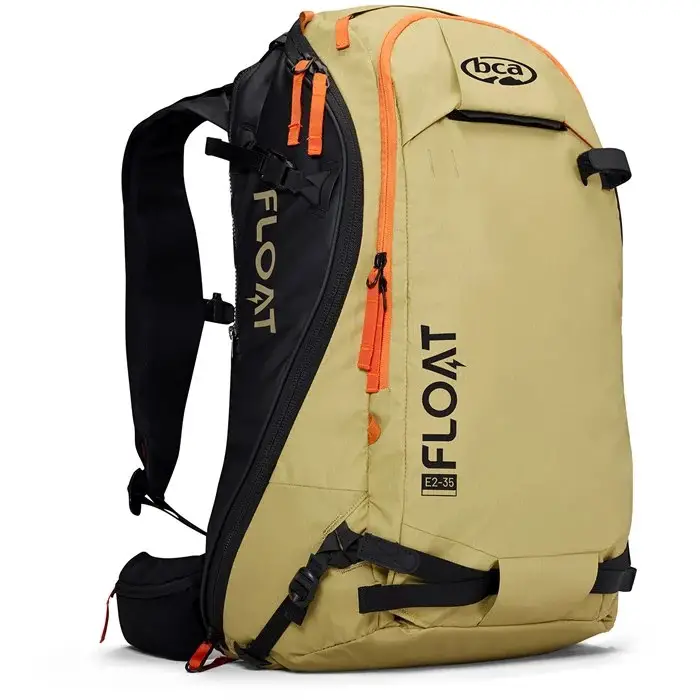
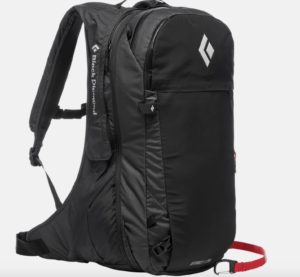
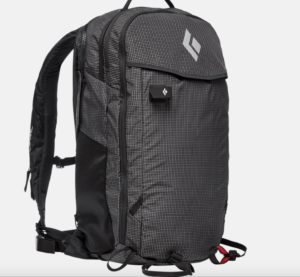
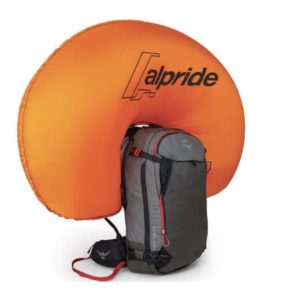






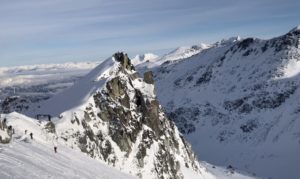
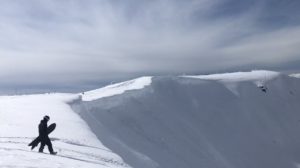



2 Responses